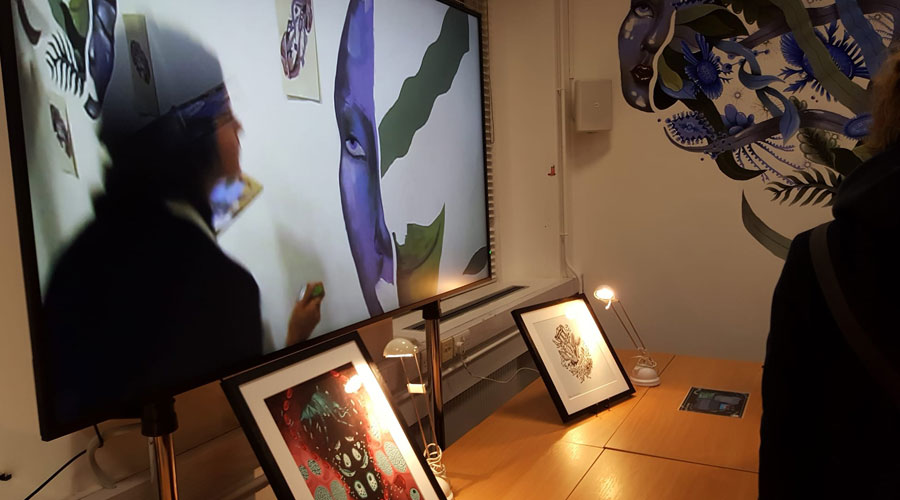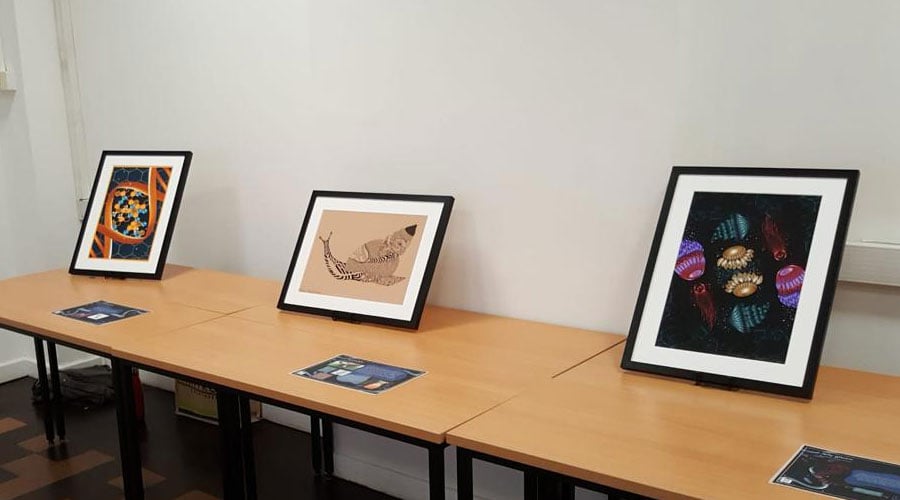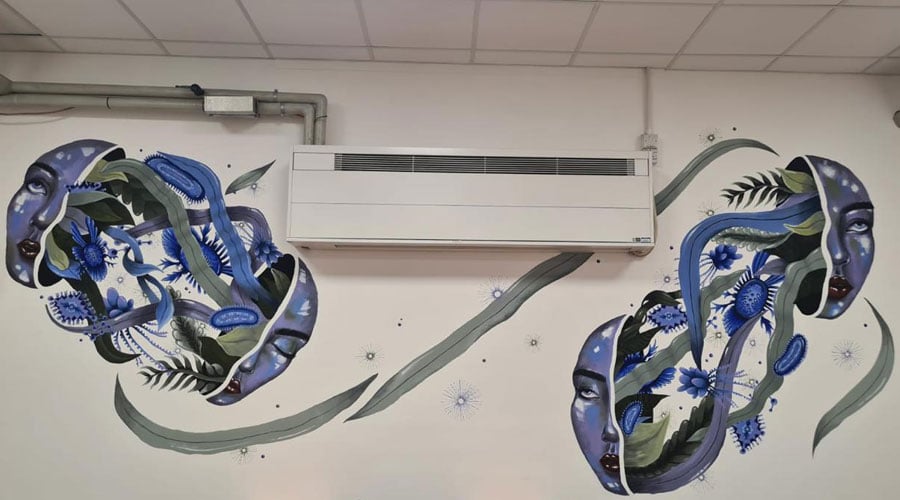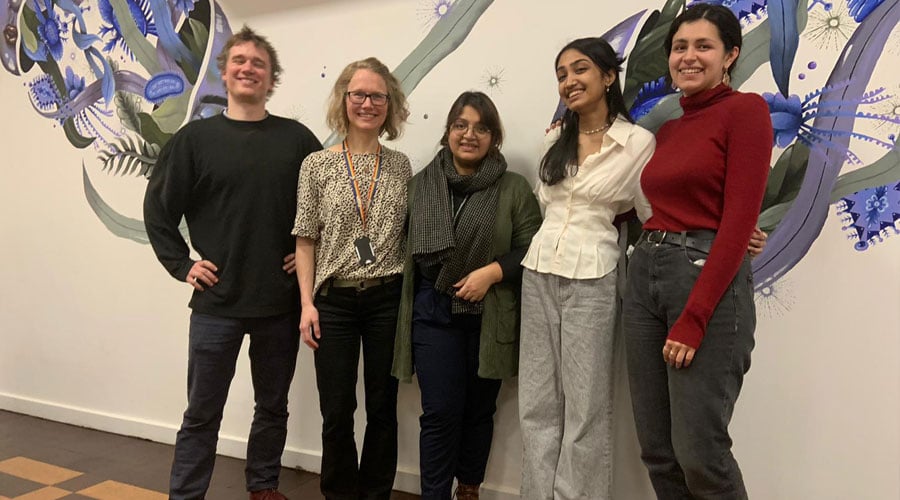Art in Science
13 March 2024 London School of Hygiene & Tropical Medicine London School of Hygiene & Tropical Medicine https://lshtm.ac.uk/themes/custom/lshtm/images/lshtm-logo-black.png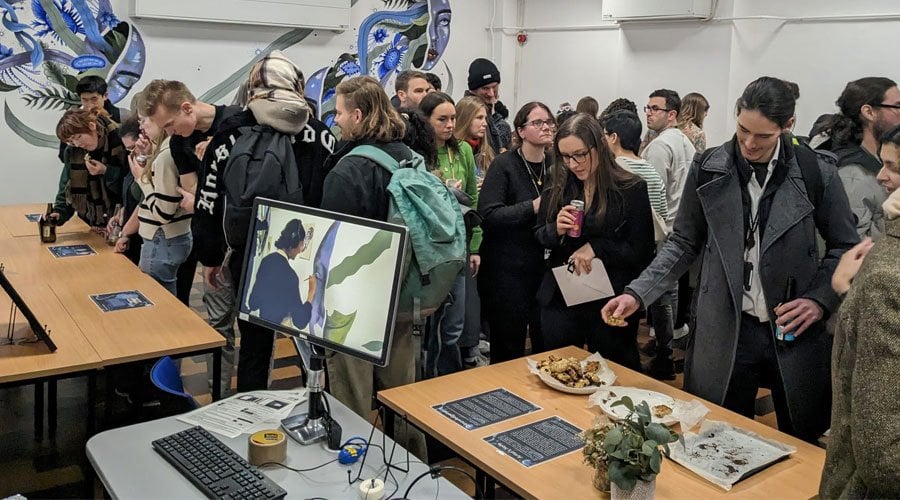
Mahati Ramachandra (MSc Medical Microbiology, 2023) hosted a science art exhibition in Keppel Street, where she showcased her artwork for the new teaching rooms and a mural on 19 January. She spoke to us about bridging the gap between science and art to foster greater appreciation and understanding of our fascinating scientific world.
“As I stepped to the back of G08, filled with buzzing conversations between scientists and artists, I felt nothing but gratitude for the scientific art that brought all these people from different disciplines together. On January 19th, my team and I hosted a science art exhibition at the London School of Hygiene and Tropical Medicine displaying artwork that I had created including a mural painted by myself, Archie Khan, Tegwen Marlais, Kiran Roy and Keir Hughes.
Growing up, I had always loved science and art and believed these two worlds had to be mutually exclusive. Through my undergraduate years, however, I met individuals who introduced me to the field of science art and realized the power of visuals in communicating scientific concepts to make them more engaging and accessible to the public.
The scientific world is an extraordinary canvas comprising organisms and their interactions that provide great sources of art. Art can be found throughout science, from the fungal patterns on Petri dishes to glowing parasites under a fluorescent microscope. Further, creativity is an essential component of science, as scientists must constantly develop new ways of thinking and viewing the scientific world. Science and art are not mutually exclusive, rather each can enhance the approach to the other. Isaac Asimov once said, "There is an art to science, and science in art; the two are not enemies, but different aspects of the whole."
The artwork displayed at the exhibition was part of an effort to include student work in the Teaching Rooms, to celebrate this very idea of scientific art. The illustrations aimed to showcase an aesthetic view of the scientific world and incorporated digital paintings based on scientific concepts including the malaria parasite life cycle, the diverse world of sea slugs and the coral microbiome. Further, the exhibition included an exciting collaboration wherein fluorescent microscopy images depicting disease caused by Trypanosoma cruzi produced by Dr Archie Khan were merged with digital renditions of creatively visualizing the infectious landscape, drawn by me. It was an opportunity to showcase how art could be extrapolated even from scientific methods of study and visually communicate infectious diseases.
The mural was a team effort and showcased the idea that every human carries within themselves a unique flora and fauna of microbes and biological interactions. Painting the mural was a huge feat, one that seemed overwhelming to fulfil. My team however were my strongest pillar and we learned and grew as both scientists and artists through this entire process of leaving our mark on the school. The process of painting the mural largely contributed to its outcome as individuals from different disciplines, having their unique art styles, came together to produce a piece that celebrated the merging of science and art. The experience was unforgettable as I got the opportunity to form meaningful connections with hardworking scientists who created beautiful art.
Hosting a science art exhibition at LSHTM is an experience I will always be grateful for. The success of the exhibition is not mine alone. I thank Dr. Richard Stabler, Sally Karrar, John Stamos, Marcin Porada and my team of mural painters for encouraging me and providing me with their valuable input and talents. Their dedication and passion for this project made the exhibition what it was. I hope to continue creating scientific art and visually communicating scientific information so that more people can gain an appreciation and better understanding of our beautiful scientific world.”
